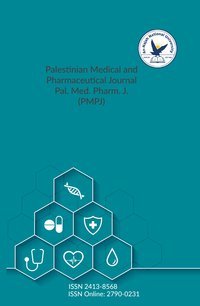Evaluation of the antimicrobial effect of citrus pulp, peel, and juice extracts against Strep-tococcus mutans and Lactobacillus acidophilus
Article info
2022-11-21
2022-12-07
263 - 270
Keywords
- Chlorhexidine
- Antibacterial
- Dental caries
- Citrus fruits
Abstract
Modern commercially available medicines are used extensively because of their guaran-teed quick action, leading to an increase in the resistance of micro-organisms against these antimicrobials. Hence, there is a need to develop innovative formulations prepared from nat-ural extracts which can replace these chemical antibacterials. The present study aimed to evaluate the antimicrobial efficacy of pulp, peel, and juice extracts of three different citrus fruits (Citrus sinensis, Citrus limon, and Citrus limetta) compared with Chlorhexidine (CHX) as positive control against oral pathogens like Streptococcus mutans and Lactobacillus aci-dophilus. The methanol extracts of three citrus fruits were prepared to estimate the Mean Zone of Inhibition in mm (ZOI), Minimum Bactericidal Concentration (MBC), and Minimum Inhibitory Concentration (MIC) to evaluate and compare their antimicrobial efficacy against these two oral pathogens. A comparison between the mean ZOI of these fruit extracts in comparison to CHX was made with the aid of an independent t-test. The present study re-vealed that Citrus sinensis (peel) showed a significantly higher mean diameter of ZOI against L. acidophilus (14.63±0.57) than CHX. Citrus limetta (peel) and CHX showed the highest antibacterial effect against S. mutans (MIC: 25 mg/mL, MBC: 50 mg/mL), but about L. aci-dophilus, all the extracts including CHX showed similar antibacterial activity (MIC: 25 mg/mL, MBC: 50 mg/mL) except for Citrus limon. All the fruit extracts were effective against both pathogens, while Citrus sinensis (peel) showed a significantly higher mean diameter of ZOI against L. acidophilus.
Evaluation of the antimicrobial effect of citrus pulp, peel, and juice extracts against Strep-tococcus mutans and Lactobacillus acidophilus
معلومات المقال
2022-11-21
2022-12-07
263 - 270
الكلمات الإفتتاحية
- Chlorhexidine
- Antibacterial
- Dental caries
- Citrus fruits
الملخص
Modern commercially available medicines are used extensively because of their guaran-teed quick action, leading to an increase in the resistance of micro-organisms against these antimicrobials. Hence, there is a need to develop innovative formulations prepared from nat-ural extracts which can replace these chemical antibacterials. The present study aimed to evaluate the antimicrobial efficacy of pulp, peel, and juice extracts of three different citrus fruits (Citrus sinensis, Citrus limon, and Citrus limetta) compared with Chlorhexidine (CHX) as positive control against oral pathogens like Streptococcus mutans and Lactobacillus aci-dophilus. The methanol extracts of three citrus fruits were prepared to estimate the Mean Zone of Inhibition in mm (ZOI), Minimum Bactericidal Concentration (MBC), and Minimum Inhibitory Concentration (MIC) to evaluate and compare their antimicrobial efficacy against these two oral pathogens. A comparison between the mean ZOI of these fruit extracts in comparison to CHX was made with the aid of an independent t-test. The present study re-vealed that Citrus sinensis (peel) showed a significantly higher mean diameter of ZOI against L. acidophilus (14.63±0.57) than CHX. Citrus limetta (peel) and CHX showed the highest antibacterial effect against S. mutans (MIC: 25 mg/mL, MBC: 50 mg/mL), but about L. aci-dophilus, all the extracts including CHX showed similar antibacterial activity (MIC: 25 mg/mL, MBC: 50 mg/mL) except for Citrus limon. All the fruit extracts were effective against both pathogens, while Citrus sinensis (peel) showed a significantly higher mean diameter of ZOI against L. acidophilus.
An-Najah National University
Nablus, Palestine
Nablus, Palestine
- P.O. Box
- 7, 707
- Fax
- (970)(9)2345982
- Tel.
- (970)(9)2345560
- (970)(9)2345113/5/6/7-Ext. 2628
- [email protected]
- EIC
- Prof. Ismail Warad
